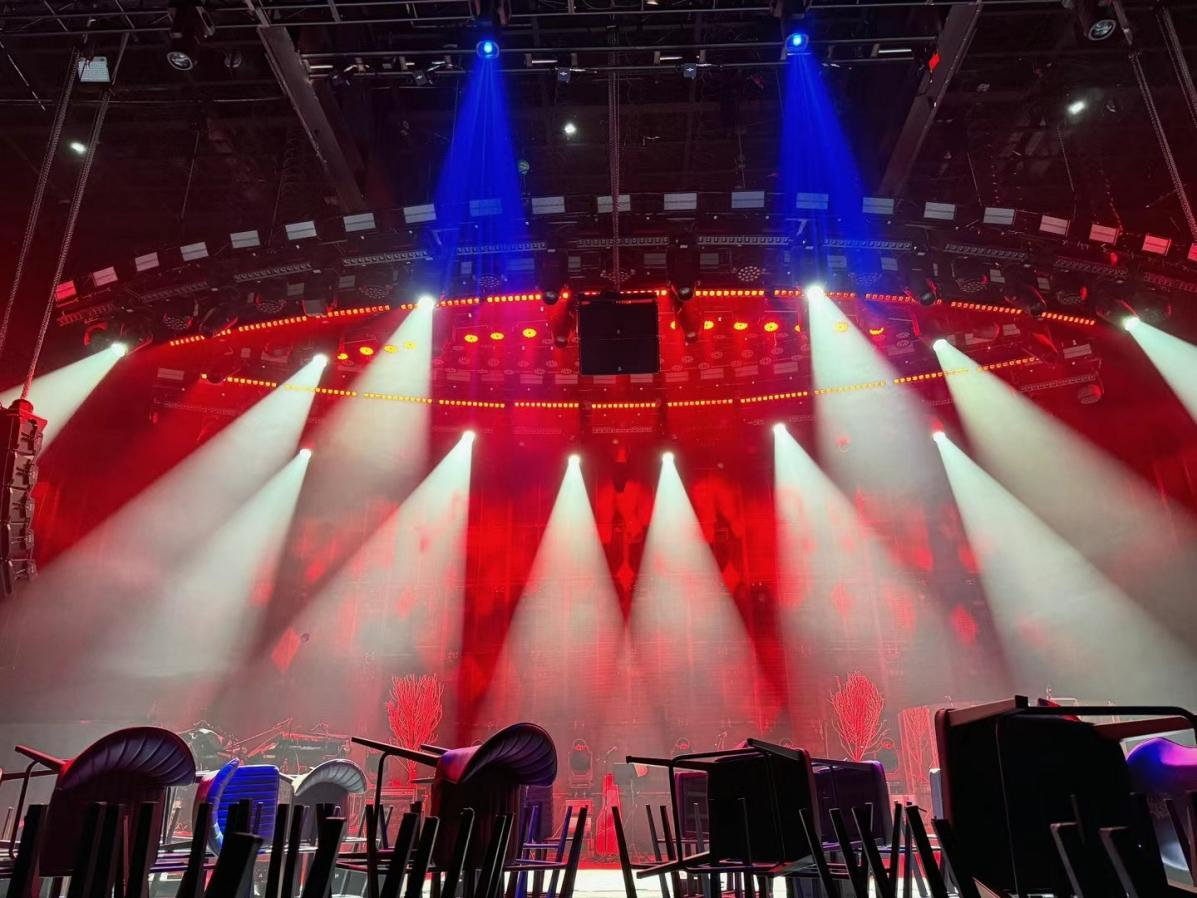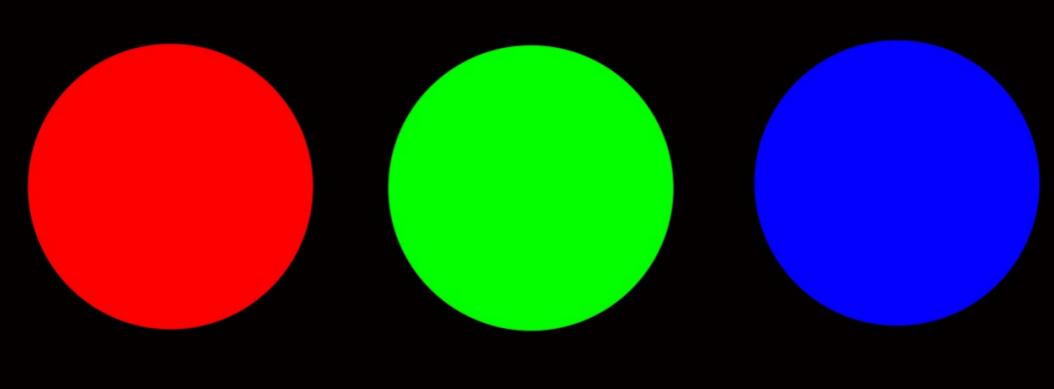Email cannot be empty
Password cannot be empty
Email format error
Email cannot be empty
Email already exists
6-20 characters(letters plus numbers only)
The password is inconsistent
Email format error
Email cannot be empty
Email does not exist
6-20 characters(letters plus numbers only)
The password is inconsistent



In the field of stage lights, what do RGB, A, UV, WW, CW, C, M, Y and color temperatures of 3200K and 6500K represent? How do they affect the changes in the scene atmosphere?
RGB -Primary colors
RGB (Red, Green, Blue) are the three primary colors and are based on the additive color mixing principle of light.

R(Red): One of the primary colors, it is a pure color with a strong visual impact in optics.
For stage performances, when red is singled out, it can immediately draw the audience's attention. It is often used to create a warm, passionate and energetic atmosphere. For example, in the climax of a rock concert or a large-scale dance performance, red lights are projected onto the stage or the performers, enhancing the appeal and dynamism of the performance.
G(Green): One of the primary colors, it represents the color characteristics of being fresh, natural and full of vitality.
In stage performances, green lights can be used to create a fantasy and mysterious atmosphere. For example, in some stage plays with fairy tale or mythological themes, green light is used to simulate scenes such as forests and magical worlds, adding unique visual effects to the performances.
B(Blue): One of the primary colors, it symbolizes a sense of calmness, profundity and mystery. It gives people an impression of being calm, profound and technological.
When blue lights are used on the stage, an ethereal and grand atmosphere can be created. They are often used in scenes such as science fiction-themed performances and elegant dance performances. For example, in a stage show themed on space exploration, large areas of blue lights can well set off the atmosphere of the vast universe.


Ultraviolet is a purple hue that strongly stirs thoughts and provokes deep thinking. UV color plays a crucial role in some performances with fluorescent effect themes. For example, when actors are wearing costumes made of fluorescent materials or when stage props use fluorescent materials, when irradiated by UV light, these fluorescent elements will emit gorgeous and fantastically colorful light. It is often used in trendy parties, stage shows with creative themes, and modern art performances with unique visual style requirements. It can create novel, unique and highly visually impactful stage effects, bringing the audience a different visual experience, attracting their attention and arousing their interest.
Lemon yellow

Lemon yellow belongs to a hue in the yellow family that is relatively bright, fresh and has a relatively high saturation. Compared with ordinary yellow, its visual brightness is higher. It is used in children's plays, pastoral-themed performances and the like. It can create a sense of open space. It can also guide the visual focus, such as highlighting key props or the lead singer. And when combined with other colors, it can produce diverse effects and enhance the expressive power of the stage.
CMY -CMY - Subtractive Primary Colors

C (Cyan): The color formed by mixing green and blue is a kind of cool-toned cyan.
Cyan can be used in stage lighting to create a refreshing and ethereal stage atmosphere. For example, when depicting stage plots such as underwater worlds or ice and snow scenes, cyan lights can well assist in creating the corresponding environmental atmosphere, making the audience feel as if they were on the spot.
M (Magenta): The color formed by mixing red and blue is a purplish-red color. It is rich and gorgeous, with a strong visual appeal.
It is often used to highlight important characters on the stage or to render ambient light. For example, in large-scale song and dance performances, the application of this color can add a sense of magnificence and solemnity to the stage. Or in some stage performances with romantic and dreamy themes, magenta lights can be used to create a romantic and fantastical atmosphere.
Y (Yellow): The color formed by mixing red and green gives people a bright, cheerful and lively feeling. It is widely used in scenes such as children's play performances, joyous festival celebration stages, and vibrant campus activities. Yellow lights can create a lively and pleasant atmosphere, making the whole stage full of vitality. It can easily arouse the positive emotions of the audience, making the on-site atmosphere more cheerful and lively, and enhancing the audience's sense of participation and enjoyment.
WW-Warm White:
The color temperature is usually around 3000K. It has a yellowish hue, similar to the light color emitted by an incandescent lamp, giving people a warm, soft and comfortable visual experience.
In stage performances, warm white lights are often used to create a soothing, romantic and warm atmosphere. For example, during the lyrical passages of a drama performance or the performance of lyrical songs, using warm white lights to cover the entire stage can help the audience better immerse themselves in the emotions conveyed by the performance. It is also suitable for some stage performances with retro or folk themes, fitting in with the traditional and warm charm that such performances aim to convey.
6500K belongs to a high color temperature. The light shows a cool white color, similar to the hue of natural daylight, with the characteristics of being clear and bright.
On the stage of dance competitions and large variety shows, the lights with a color temperature of 6500K can ensure that every movement and every detail on the stage are clearly presented, creating a professional, modern and energetic stage atmosphere and strengthening the visual impact and professionalism of the performance. In addition, in some performances with science fiction and modern themes, it can also create a simple, open and technological spatial effect, helping the audience to be more easily immersed in the corresponding plot settings, making the stage present a sense of space and modernity that conforms to the theme and enhancing the visual effect and watchability of the entire performance.
CW-Cold White:
It presents a bluish-white hue. Compared with warm white, it is brighter, cooler and has a modern feel.
It is often used in scenes such as modern dance performances, stage displays for business activities, and technology product launches. It can create a simple, capable and efficient atmosphere, making the stage look more modern and professional, allowing the audience to focus more on the performance content, the products on display or the information being conveyed, highlighting the key points of the stage display and strengthening the professionalism and clarity of the stage effect.